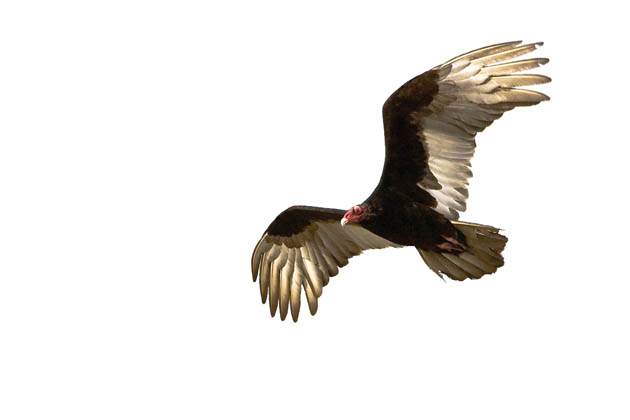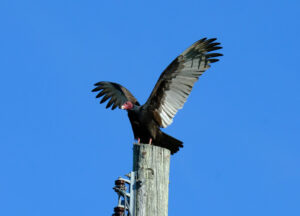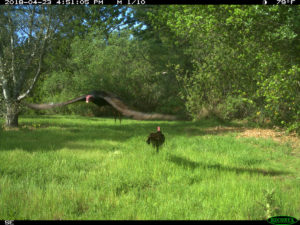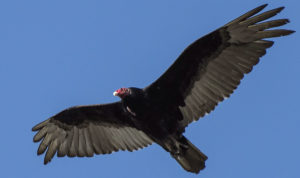Turkey vultures can locate carrion by scent alone, without visual cues—a talent shared with the closely related greater and lesser yellow-headed vultures of the American tropics. All the other New World vultures—the widespread black vulture, the tropical king vulture, the California and Andean condors—and the ecologically equivalent but unrelated Old World vulture rely on sight. Science took a long and winding road to this conclusion, though, thanks in part to John James Audubon’s misdirection.
In 1826, Audubon, visiting Europe to promote his bird paintings, told an audience in Edinburgh that North American vultures depended on sight, not smell, based on a series of experiments with wild and captive vultures. He stuffed a deerskin with straw and left it in a field. A vulture descended, pecked at the dummy deer, and flew away—but not before killing and swallowing a compensatory garter snake. Since turkey vultures seldom take live prey, Audubon’s subject was most likely a black vulture. The artist-naturalist also reared two nestling vultures and concluded from his observations that their sense of smell was limited. But he also noted that they attacked piglets and poultry–more like black vulture behavior.
When critics attacked Audubon, his friend John Bachman, a Lutheran clergyman in South Carolina, conducted his own experiments. The results, he wrote, vindicated Audubon. Bachman used “a coarse painting on canvass [sic]..,representing a sheep skinned and cut open,” which attracted—and frustrated—vultures. The minister then blinded a captive vulture; the bird showed no subsequent interest in food and, not surprisingly, died. It is not clear where these were turkey vultures or black vultures.
Others remained unconvinced. British anatomist Richard Owen dissected a turkey vulture and a turkey in 1837, found the former to have a larger trigeminal nerve, and opined: “The vulture has a well-developed organ of smell, but whether he finds his prey by that sense alone, or in what degree it assists, anatomy is not so well calculated to explain as experiment.” But the experimenters didn’t step up to the plate; for decades, the debate was fueled by anecdote. One bizarre exception: in 1905 Alexander Hill presented a domestic turkey—stand-in for the turkey vulture—with a saucer of sulphuric acid mixed with potassium cyanide along with its food, to mask the smell. The turkey did not survive the resulting explosion.
It fell to Kenneth Stager, longtime curator of ornithology at the Natural History Museum of Los Angeles County, to settle the smell-versus-sight controversy once and for all with exhaustive fieldwork in 1959-61. Stager’s “Eureka” moment came when a Union Oil employee told him that the company had begun adding malodorous ethyl mercaptan to natural gas so leaks could be detected. Thereafter, turkey vultures were observed homing in on leaking pipelines. Stager hauled a mercaptan-dispensing device into the Sonoran Desert near Puerto Penasco and released the foul stuff. Turkey vultures came flocking, flying tight circles over the test rig. The experiment was replicated on a ranch in Ventura County, confirming what Stager described as “a definite olfactory response by the turkey vulture to an ethyl mercaptan stimulus.” His results dovetailed with Betsy Bang’s anatomical studies of the turkey vulture’s brain. Score one for Owen.
Joe Eaton writes more about the underappreciated turkey vulture in the October issue of Bay Nature, available now.




